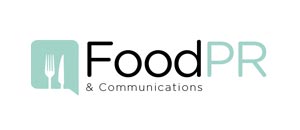This is a strange time for the food industry. Some businesses may have had a delivery option available, but it was not the primary way consumers experienced the brand, and for others the world of takeaway, delivery and online retail may be an entirely new venture. Adapting and pivoting your business to change strategy is essential to remain afloat and even thrive in this challenging climate. Developing a strong communications strategy at this time is crucial and can be achieved by following this three-pronged approach.
Step 1: Immediate communications
Building a communications strategy to compliment your business strategy is crucial so that customers feel reassured that you are doing the best that you can to keep everyone safe. Centre your initial communications around informing customers about what hygiene standards and safety measures you are implementing so they will trust your business’ approach to the crisis. If your venue has had to close, ensure your consumers know that you are taking every precaution to take care of your staff and that you will be open as soon as it is safe to do so.
Step 2: Living with Coronavirus
It is important to make sure that as the business is changing course and adapting to the new normal, a clear strategy is in place to inform customers about the different services the business is now offering and how they are implementing the new safety measures. The reality is that no one knows how long this may last, so it is essential to develop a long term strategy that details how the business plans to operate.
Many businesses have had to think outside the box and develop new products and services to suit the current restrictions. With the uncertainty going forward it may be worth considering a shift of business model – moving the focus from a physical restaurant to a delivery/collection service, encouraging and inspiring your consumers to bring the restaurant experience home with them. Focus your attention on building awareness of your new service; customers can only support the business if they know what services are available.
Introducing a charitable element to your offering is also a great idea. As well as doing your bit for society, it shows customers the value you place on giving back to the community even at such a difficult time and helps to spread a positive message about your brand. For example, donating some of the profits of your service to the #feedtheheroes campaign or towards providing PPE equipment to frontline staff.
Step 3: Encourage consumers to come back to the business
The worst thing you can do for your business right now is to take a step back and wait for everything to return to ‘business as normal’. In the long term, it is not enough to keep the brand alive and relevant through social media content alone – the business needs a purpose and there needs to be some form of tangible customer experience even if it looks entirely different to how it did just a few months ago. It is about being proactive – get people onto the website to buy your products. Remember that communication is key during this time – keep consumers informed about what services you are currently offering so that they can support you. And finally, remain positive and optimistic that opportunities will arise soon and be proactive about making the most of these opportunities when they do.
*Pointers summarized from The PR Show- Coronavirus comms in tourism, travel and hospitality
https://soundcloud.com/prweekuk/the-pr-show-coronavirus-comms-in-tourism-travel-and-hospitality





